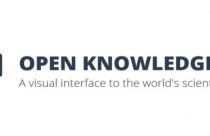SCIgen: Is it a Boon or Bane for Academic Industry?

That paper is nonsense!
Most of us have had that reaction at some time concerning a scientific paper. Throughout the history of science there have been many papers published which were later revealed to be wrong. Bad papers are published every day and some individuals have taken it upon themselves to expose the weakness of the publication process by writing papers that look and sound like research papers but are in fact pure nonsense. Surprisingly often, these creations are accepted for publication by journals or conferences, to the delight of the authors and the embarrassment of the publishers.
SCIgen: Automatic Research Paper Generator
Writing scientific nonsense is time consuming, what with all the verbiage, graphs, and citations. Enter the computer scientists at the Massachusetts Institute of Technology, who created the research paper generator SCIgen, which will do all the heavy lifting for you. SCIgen is an automatic paper generator which randomly strings together jargon and adds illustrations and references. The text is so impenetrable that many a reader will shake his head and say “That guy must really be smart, because I sure can’t figure out what he’s talking about.” Many of these papers have been accepted for publication, mostly at poorly refereed conferences and second tier Chinese journals, but occasionally in quite respected journals. Students from Iran managed to get a nonsense paper into the Elsevier journal, The Journal of Applied Mathematics and Computation.
Hoaxes: Boon or Bane?
As despised as hoaxes are by the status quo, they serve a useful purpose in challenging the too ready acceptance of new claims. The most successful scientific hoax may have been the Piltdown Man of 1912, a purportedly prehistoric fossil which was actually a modern fake cobbled together from a human skull, an orangutan’s jaw, and a chimp’s teeth. The fake was accepted as authentic by most paleontologists of the time, wasting much time and ruining some careers as scientists followed up its implications on human evolution. But the hoax also showed the necessity for critical analysis of scientific claims, and prompted more accurate dating of fossils. SCIgen has already had some beneficial effects. Publication mill journals have been exposed by SCIgen papers and have had their accreditation revoked and other journals are re-evaluating their review process.
Fake Papers I Have Known
When I was in graduate school one of the new group members had the reputation of making large claims from scant evidence. Other members decided to teach him a lesson. They collaborated on the writing of the first page of a ridiculous fake communication which announced the synthesis and crystal structure of a compound identical to the target of his own research. When presented with the hoax, the big talker was aghast and rushed off to the library. Soon afterwards he returned. “I could not find,” he said. “Joke, I think is joke.” At this moment the group leader walked in, with a copy of the hoax in his hand and a painted smile on his face. “Too bad about this paper,” he said. “But I can’t believe these bond angles.”
I imagine the graduated student (and the professor) were a bit more critical in the future of literature claims.






